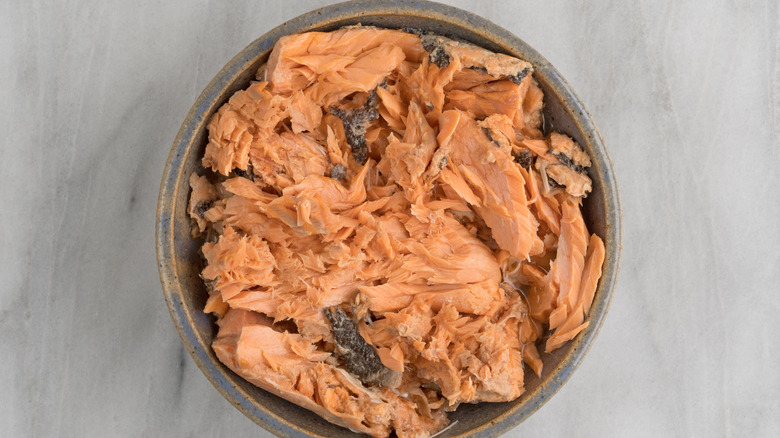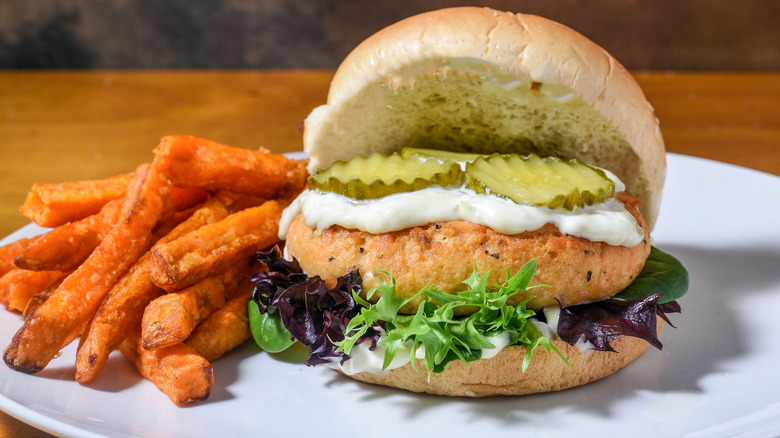Is Canned Salmon Raw Or Cooked?
Why do people stock up on canned goods when they are worried about an impending natural disaster or societal collapse? Because even without power or a source of fuel, you can still eat canned foods. No matter the variety, all canned food has already been cooked, and that definitely includes salmon. You can tell by the firm texture and opaque, pale-pink color of the fish.
In the United States, wild-caught salmon is fished and processed during only a few weeks in the summer months, since this is when it's seasonally available — but farm-raised salmon can be harvested and canned throughout the year. Once the salmon have been sent to the cannery, the fish are sorted by size and type, and then the heads, eggs, scales, fins, tails, and internal organs are removed. The salmon are then washed, cut into fillets or bone-in steaks, placed into cans along with some salt, and sealed.
This differs from how tuna and canned sardines are cooked, since the salmon is packed raw instead of being steamed first. The salmon is instead pressure cooked inside the tins and emerges preserved, bacteria-free, and completely cooked before being labeled and distributed.
How to prepare canned salmon
It's generally better to treat regular canned salmon as a base ingredient, since it has a neutral taste. That quality also makes it versatile — it is definitely one of the canned meats you should buy so that you can whip up protein-rich meals in a flash. Start by draining the liquid, which is just the juices from the fish itself. Typically, salmon is canned with the skin and the bones. Remove them if you prefer, but they are totally edible. The calcium-rich bones have a barely crunchy texture that is largely indiscernible alongside other ingredients.
You can use canned salmon just like you would use canned tuna to make mayonnaise-based salads, and it pairs particularly well with bright lemon, briny capers, sharp red onion, and fragrant dill — though salmon is mild enough to go in lots of different directions. Blitz it with cream cheese and a tangy dairy product like sour cream to make a delicious dip, or flake it into a bowl of pasta al limone. You can even combine canned salmon with breadcrumbs, beaten eggs, and seasonings to make fish-burger patties.
Companies like Shark Tank's Fishwife produce more artisanal canned-fish selections that should be enjoyed on their own or with thoughtful accompaniments. Canned-salmon specialties — like tinned maplewood-smoked salmon flavored with dark-brown sugar and garlic, or salmon in umami-packed sweet-and-spicy sauce — do not need much more than a piece of toasted sourdough bread or a bowl of steamed white rice.


